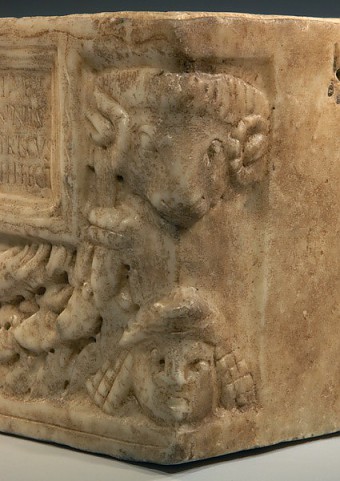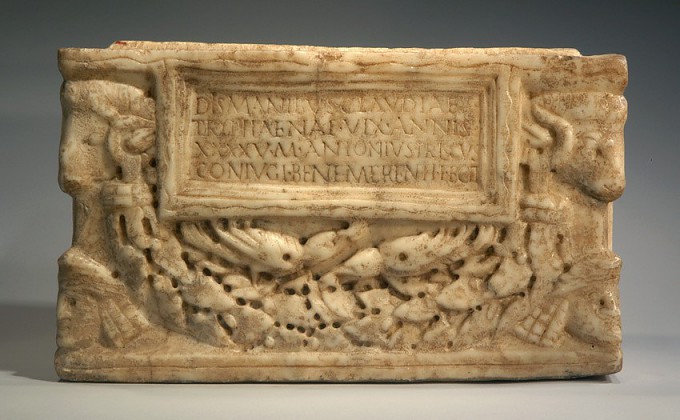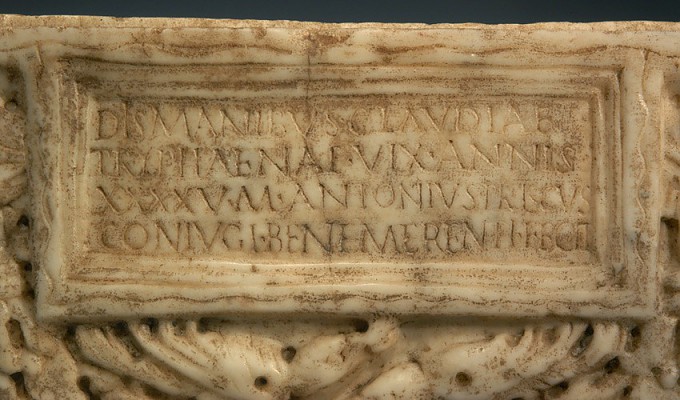Cinerarium
Eine antike römische Urne
Marble
1./2. century ACE
Donated by Dr. Hermann Gnädinger, Kassel
In the ancient Roman Empire there were various burial rites. In Rome itself, cremation was the most common form of burial until the 3rd century ACE. Only after that did it lose importance and was largely replaced by inhumation.
In ancient Roman cremation, the body of the deceased was burned at the stake with personal offerings and perfumes. The remains were placed in a simple urn made of clay. A charon penny (originally an ancient Greek custom) and perfumes, sometimes also jewelry, were added.
The oldest Roman cineraria found date back to the pre- to early Augustan era (30 BCE - 14 ACE). Their appearance was based on chests or boxes. The design changed over the centuries and also the decorations varied depending on the region.
In the beginning, this type of urn was mainly reserved for the aristocratic classes. Its rare occurrence and its special design quality speak for this. It was probably used mainly for family graves. Later, however, mainly slaves or freedmen from good families who had risen socially, but also military personnel were buried in cineraria. Cineraria were found so far mostly in the niches of large columbaria (burial chambers).
Gerold Eppler M.A.

© Museum für Sepulkralkultur, Kassel, Bildarchiv

DIS MANIBVS CLAVDIAE TRYPHANAE VIX ANNIS XXXXV M ANTIONIVS PRISCVS CONIVGI BENE MERENTI FECIT
© Museum für Sepulkralkultur, Kassel, Bildarchiv

To the gods of immortality, I Marcus Antonius Priscus made this for my well-deserving wife, Claudia Tryphana, who lived 45 years.
© Museum für Sepulkralkultur, Kassel, Bildarchiv
Arbeitsgemeinschaft Friedhof und Denkmal e.V.
Zentralinstitut für Sepulkralkultur
Museum für Sepulkralkultur
Weinbergstraße 25–27
D-34117 Kassel | Germany
Tel. +49 (0)561 918 93-0
info@sepulkralmuseum.de








